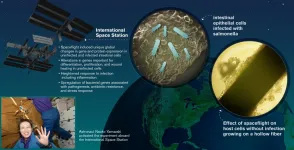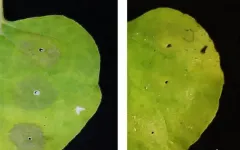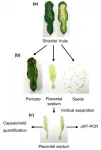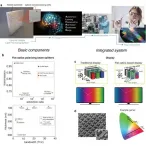Injectable porous scaffolds promote better, quicker healing after spinal cord injuries
Hydrogel scaffolds with regularly spaced pores encourage spinal cords cells to grow, improve regeneration of nerve cells.
2021-03-09
(Press-News.org) WASHINGTON, March 9, 2021 -- Spinal cord injuries can be life-changing and alter many important neurological functions. Unfortunately, clinicians have relatively few tools to help patients regain lost functions.
In APL Bioengineering, by AIP Publishing, researchers from UCLA have developed materials that can interface with an injured spinal cord and provide a scaffolding to facilitate healing. To do this, scaffolding materials need to mimic the natural spinal cord tissue, so they can be readily populated by native cells in the spinal cord, essentially filling in gaps left by injury.
"In this study, we demonstrate that incorporating a regular network of pores throughout these materials, where pores are sized similarly to normal cells, increases infiltration of cells from spinal cord tissue into the material implant and improves regeneration of nerves throughout the injured area," said author Stephanie Seidlits.
The researchers show how the pores improve efficiency of gene therapies administered locally to the injured tissues, which can further promote tissue regeneration.
Since many spinal cord injuries result from a contusion, the biomaterial implants need to be injected in or near the injured area without causing damage to any surrounding spared tissue. A major technical challenge has been fabricating scaffold materials with cell-scale pore sizes that are also injectable.
In the researchers' method, they injected beads of material through a small needle into the spinal cord, where the beads stick together to form a scaffold, where cells can crawl in the pore spaces between the beads. The researchers found inclusion of these larger cell-scale pores within biomaterial scaffolds improved cell infiltration, gene delivery, and tissue repair after spinal cord injury, compared to more conventional materials with nanoscale pores.
The researchers made the highly porous scaffolds using two different methods. One was simpler but created a more irregularly sized pore network. The second was more complicated but created a highly regular pore structure.
Even though both materials had the same average pore size and chemical composition, more regenerating nerves were found to infiltrate scaffolds with regularly shaped pores.
"These results inform how to maximize interfacing with the nervous system," said Seidlits. "This has potential applications not only for developing new therapies for brain and spinal cord repair but also for brain-machine interfaces, prosthetics, and treatment of neurodegenerative diseases."
INFORMATION:
The article "Injectable, macroporous scaffolds for delivery of therapeutic genes to the injured spinal cord" is authored by Arshia Ehsanipour, Mayilone Sathialingam, Laila M. Rad, Joseph de Rutte, Rebecca D. Bierman, Jesse Liang, Weikun Xiao, Dino Di Carlo, and Stephanie K. Seidlits. The article will appear in APL Bioengineering on Mar. 9, 2021 (DOI: 10.1063/5.0035291). After that date, it can be accessed at https://aip.scitation.org/doi/10.1063/5.0035291.
ABOUT THE JOURNAL
APL Bioengineering is an open access journal publishing significant discoveries specific to the understanding and advancement of physics and engineering of biological systems. See http://aip.scitation.org/journal/apb.
[Attachments] See images for this press release:
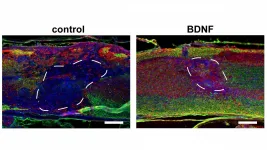
ELSE PRESS RELEASES FROM THIS DATE:
2021-03-09
Astronauts face many challenges to their health, due to the exceptional conditions of spaceflight. Among these are a variety of infectious microbes that can attack their suppressed immune systems.
Now, in the first study of its kind, Cheryl Nickerson, lead author Jennifer Barrila and their colleagues describe the infection of human cells by the intestinal pathogen Salmonella Typhimurium during spaceflight. They show how the microgravity environment of spaceflight changes the molecular profile of human intestinal cells and how these expression patterns are further changed in response to infection. In another first, the researchers were also able to detect ...
2021-03-09
PORTOLA VALLEY, CA, March 9, 2021 -- Bay Area Lyme Foundation, a leading sponsor of Lyme disease research in the U.S., today announced the publication of new data finding that five herbal medicines had potent activity compared to commonly-used antibiotics in test tubes against Babesia duncani, a malaria-like parasite found on the West Coast of the U.S. that causes the disease babesiosis. Published in the journal Frontiers in Cellular and Infection Microbiology, the laboratory study was funded in part by the Bay Area Lyme Foundation. Collaborating researchers were from Johns Hopkins Bloomberg School of Public Health, California Center for Functional Medicine, and FOCUS Health Group, Naturopathic.
"This research is particularly important ...
2021-03-09
A study published in the journal eLife made all the possible mutations in the amyloid beta peptide and tested how they influence its aggregation into plaques, a pathological hallmark of Alzheimer's disease.
The comprehensive mutation map, which is the first of its kind, has the potential to help clinical geneticists predict whether the mutations found in amyloid beta can make an individual more prone to developing Alzheimer's disease later in life.
The complete atlas of mutations will also help researchers better understand the biological mechanisms that control the onset of the disease.
"The genetic sequencing of individuals is increasingly common. As a result, we are ...
2021-03-09
While it's an unfair reality that women who develop gestational diabetes are ten times more likely to develop type 2 diabetes later in life, only a third of these women realise that they're at high risk, according to new research by the University of South Australia.
Conducted in partnership with the University College Dublin, the research examined the views of 429 Australian women with a history of gestational diabetes to establish their perceived risks of developing type 2 diabetes, potential barriers to losing weight, and useful strategies for supporting a healthy weight.
Lead researcher, UniSA's Kristy ...
2021-03-09
Tsukuba, Japan - Producing high-value pharmaceutical proteins in plants--sometimes called "molecular pharming"--offers advantages over some other manufacturing methods, notably the low cost and ease of scaling up production to meet demand. But expressing large quantities of "foreign" proteins in plants can also sometimes lead to problems, such as dehydration and premature cell death in the leaves.
Now a team led by Professor Kenji Miura of the University of Tsukuba has discovered that spraying leaves with high concentrations of the antioxidant ascorbic acid (vitamin C) can increase protein production three-fold or even more. They recently published their findings in Plant Physiology.
The team worked with a close relative of tobacco, ...
2021-03-09
The fossil in question is that of an oviraptorosaur, a group of bird-like theropod dinosaurs that thrived during the Cretaceous Period, the third and final time period of the Mesozoic Era (commonly known as the 'Age of Dinosaurs') that extended from 145 to 66 million years ago. The new specimen was recovered from uppermost Cretaceous-aged rocks, some 70 million years old, in Ganzhou City in southern China's Jiangxi Province.
"Dinosaurs preserved on their nests are rare, and so are fossil embryos. This is the first time a non-avian dinosaur has been found, sitting on a nest of eggs that preserve embryos, in a single ...
2021-03-09
For the first time, two researchers--one from the University of Copenhagen and the other from Columbia University--have accurately dated the arrival of the first herbivorous dinosaurs in East Greenland. Their results demonstrate that it took the dinosaurs 15 million years to migrate from the southern hemisphere, as a consequence of being slowed down by extreme climatic conditions. Their long walk was only possible because as CO2 levels dropped suddenly, the Earth's climate became less extreme.
A snail could have crawled its way faster. 10,000 km over 15 million years--that's how long it took the first herbivorous dinosaurs to make their way from Brazil and Argentina all the way to East Greenland. This, according to a new study by Professor ...
2021-03-09
Chili peppers (Capsicum spp.) are an important spice and vegetable that supports food culture around the world, whose intensity of its pungent taste is determined by the content of capsicumoids. However, the content of capsicumoids varies depending on the variety and is known to fluctuate greatly depending on the cultivation environment. This can be a big problem in the production, processing and distribution of peppers where sweet varieties can be spicy and highly spicy varieties are just only mildly spicy. It is thought that changes in the expression of multiple genes involved in capsaicinoid biosynthesis are involved in such changes in pungent taste ...
2021-03-09
When something bad happens to a child, the public and policy response is swift and forceful.
How could this have happened?
What went wrong?
What do we do to make sure it never happens again?
When a family becomes erroneously or unnecessarily enmeshed in the child welfare system, that burden is largely invisible - a burden borne mostly by the family itself.
In both situations, the fault for the systemic failure is often placed on the caseworker - overburdened, under-resourced, and forced to make quick and critical judgments about the risk ...
2021-03-09
In a new paper published in Light Science & Application, the group led by Professor Andrea Fratalocchi from Primalight Laboratory of the Computer, Electrical and Mathematical Sciences and Engineering (CEMSE) Division, King Abdullah University of Science and Technology (KAUST), Saudi Arabia, introduced a new patented, scalable flat-optics technology manufactured with inexpensive semiconductors.
The KAUST-designed technology leverages on a previously unrecognized aspect of optical nanoresonators, which are demonstrated to possess a physical layer that is completely equivalent to a feed-forward deep neural network.
"What we have achieved," explains Fratalocchi, "is a ...
LAST 30 PRESS RELEASES:
[Press-News.org] Injectable porous scaffolds promote better, quicker healing after spinal cord injuries
Hydrogel scaffolds with regularly spaced pores encourage spinal cords cells to grow, improve regeneration of nerve cells.

